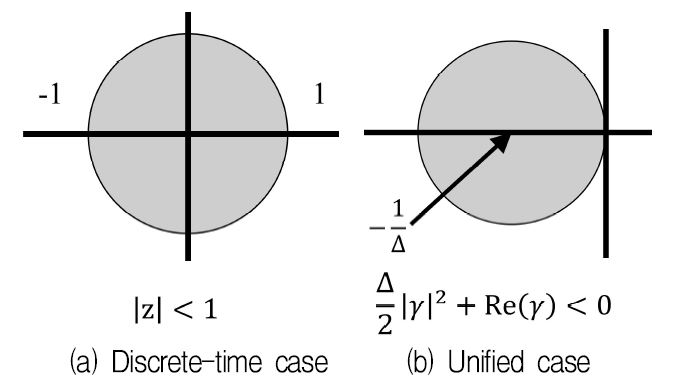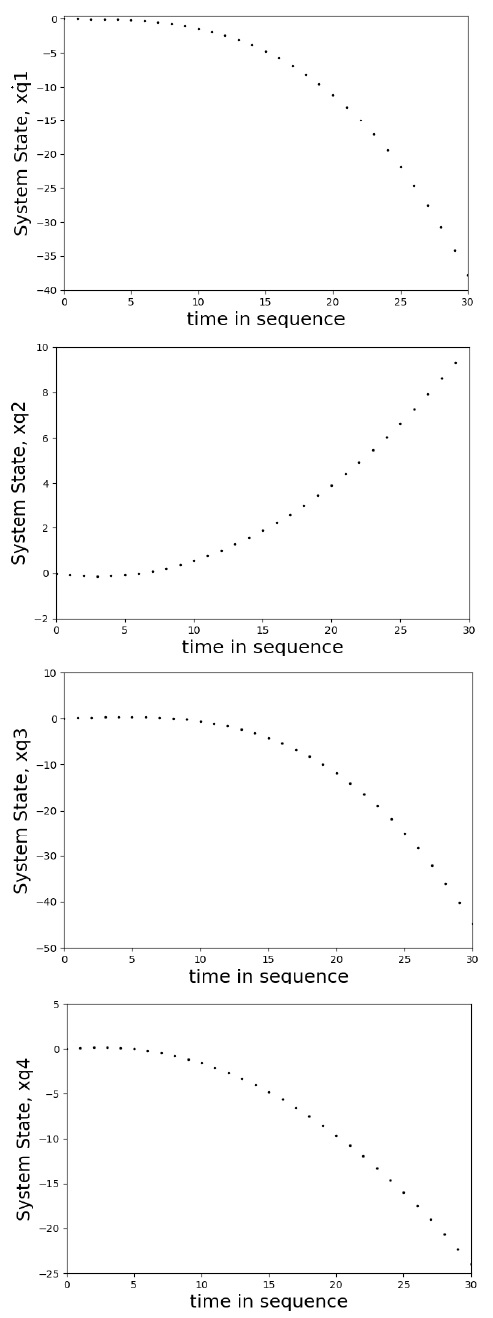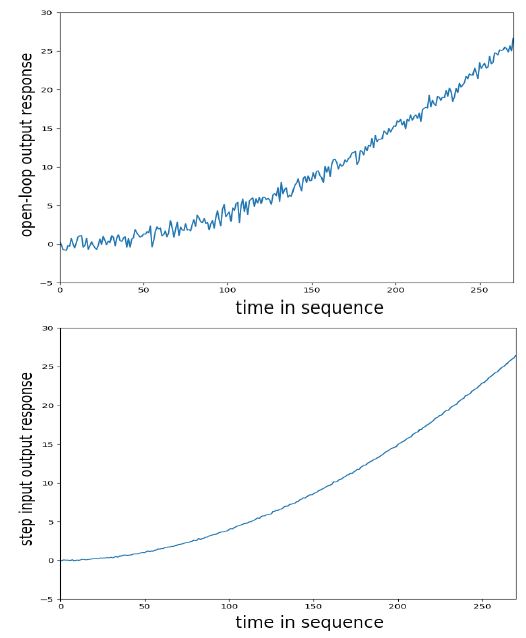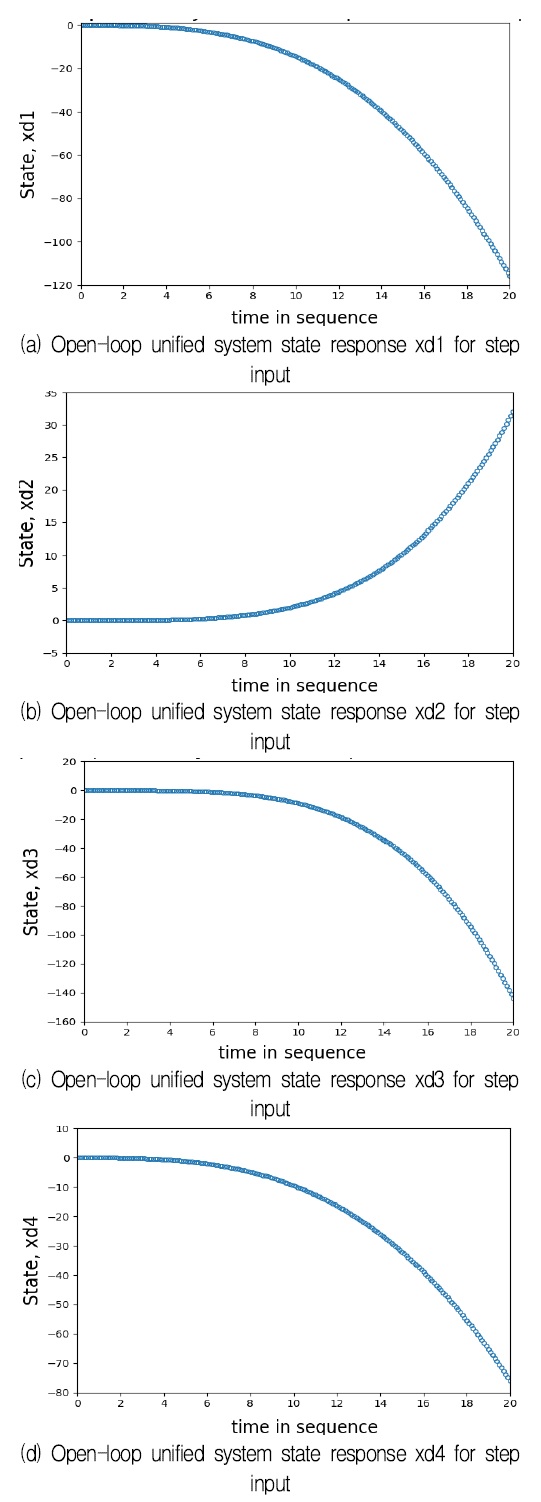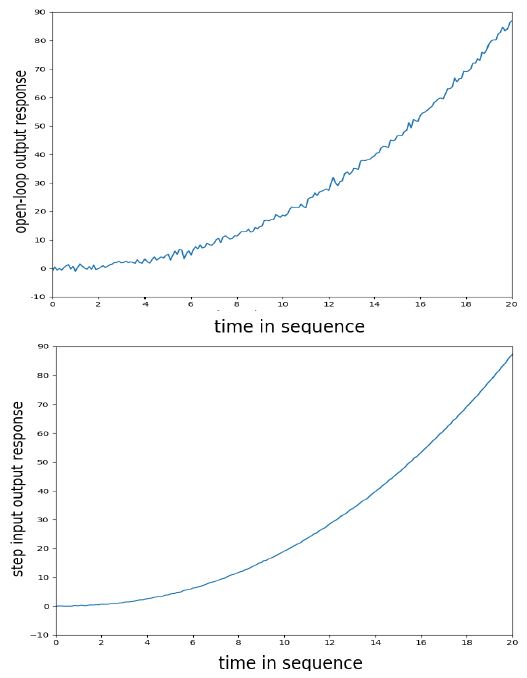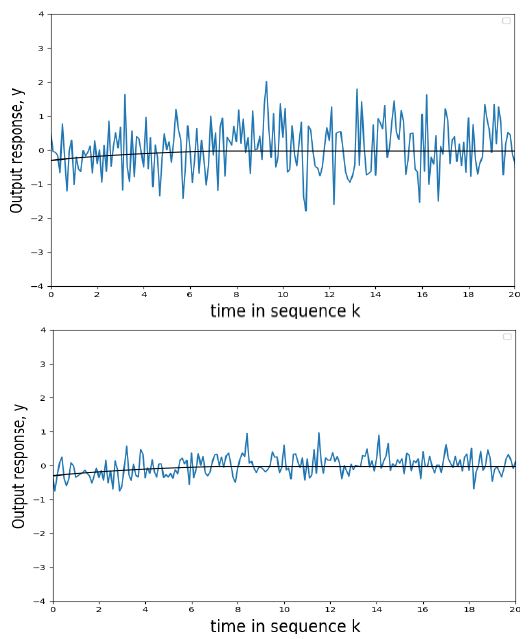
Optimal Observer of a Stochastic Decentralized Singularly Perturbed Unified System
Abstract
In this research, devising a Kalman filter is carried out to surmount or eliminate the noise enclosed in system signals. This Kalman filter is an optimal appraiser of the state, where optimal is prescribed in relation with reducing the mean square assessment error. Optimal observer with reduced-order is suggested for the decentralizied discrete-time system, and a unique optimal observer is developed for the unified decentralized system where reduced-order is used. The reduced-order steadying observer is also obtained by the Riccati equation method. The research literature has not still disclosed research results for this reduced-order unified optimal observer issue for the decentralized singularly perturbed system. For verifying these outcomes, we demonstrate that mathematical evidence for optimal observers attained from the examples of discrete-time, and unified system.
초록
이 논문에서는 시스템 신호에 포함된 잡음을 극복 또는 제거하기 위해 칼만 필터 개발 과정이 수행되었다. 칼만은 평균 자승 추정오차의 감소에 관련하여 최적화가 규정되는, 최적 상태 감정기이다. 축소차수를 가지는 최적 관측기가 분산 이산시간 시스템에 대해 제안되었으며 또한 축소차수가 사용된 단일 분산 시스템에 대한 유일한 최적 관측기가 개발되었다. 축소차수 안정화 관측기는 또한 리카티 방정식 방법에 의해서도 도출되었다. 연구 문헌들은 아직까지 이 분산 특이변동 시스템의 축소차수 단일 최적 관측기 주제에 관한 연구 결과를 밝힌 바가 없다. 이 결과들을 검증하기 위해 이산시간, 그리고 단일 시스템의 예제들로부터 획득된 최적 관측기들에 대한 수학적 증거를 실증하였다.
Keywords:
stochastic system, Kalman filter, unified optimal observer, decentralized singularly perturbed systemⅠ. Introduction
Devising a feedback controller has been studied very sincerely because it was presumed that all state variables are attainable for state monitoring [1]-[5]. Y. M. Kim and W. B. Baek extended the research to adaptive sliding mode control for quadrotor with feedback linearization method [6]. Nevertheless, some states are not perceptible in many utilizations. In other words, adequate sensors for guaging these states presently are not found. In case that the states for system are not feasible, then a state observer is put to use of evaluating the initial system states. Occasionally, indeed when materializing optimal control, system efficiency is yet intolerable. One of the essential causes for this is that dynamic systems are stimulated not only by the allowed control input but also by disruption signals. These signals incur the system type being stochastic [7]. To remove or get rid of the signal noise involved in system signals, a Kalman filter is required to be formulated. The Kalman is an optimal evaluator of the state, where optimal is established on the basis of lessening the error of mean square assessment. Settling the observer is of concern to many academic investigators [8]-[11]. H. Do and J. Oh introduced a study on smartphone indoor navigation technology using extended Kalman filter [12].
In this work, reduced-order optimal observers are proposed for the decentralized discrete-time system, and a exclusive optimal observer is suggested for the decentralized reduced-order unified system are obtained. The reduced-order steadying observer will be acquired by the Ricccati equation method too. The academic literature has not still acknowledged this reduced-order unified optimal observer issue for the decentralized singularly perturbed system.
Ⅱ. Main Results
2.1 Discrete-Time Systems
For the stochastic decentralized discrete-time system [12], consider the following system model acquired in [5].
| (1) |
where xi(k)∈Rn is the state vector of the system, ui(k)∈Rp and yi(k)∈Rq are the system input and output vectors, respectively. The matrices Aq0i, Bq0i, Cq0i, and Dq0i are constant matrices of appropriate demensions. Independent vectors of Gaussian noise are wi(k)∈R and vi(k)∈R with zero mean and intensity V1q and V2q, respectively.
In this case of a discrete-time system, original system noise and noise for state monitoring are presumed to be white Gaussian noise having zero mean Σw > 0 and intensity Σv > 0. The correlation function is described as
| (2) |
In accordance with stochastic control method for observers [14], a state evaluator is able to be formulated for individual subsystem. Because the control input ui(k) is deterministic, the state evaluator can be described as
| (3) |
Then we have the goal here to discover the optimal observer gain Lq0i(k) that eliminate the noise involved in the system output signals. Here, we adapt the orthogonality priciple [14]:
A necessary condition for a linear estimate to be optimal is that the estimation error be orthogonal(in the probabilistic sense) to al of the data:
| (4) |
Utilizing the orthogonality principle indicates that
| (5) |
where yi(k) = Cq0ixi(k) + Sq0iwi(k) + Fq3ivi(k).
Using yi(k) into equation (5) gives
| (6) |
Considering is optimal, for n<k. As original system noise and state monitoring noise are uncorrelated with past state monitoring, So, the orthogonality principle is validated to all data such that n < k. For n = k,
| (7) |
Associating these outcome generates
| (8) |
Then, the optimal observer gain is given as
| (9) |
where
Because of the evaluation of the state, the error is described as . Then, the following equation is generated as
| (10) |
For a discrete-time system, the following evaluation covariance matrix for error is demanded to stipulate the Kalman gain. The error model is able to determine this covariance matrix. White noise is the Input to the error model here. Using this outcome to the error model generates
| (11) |
With deploying equation (11), the equation for the error covariance matrix ei(k) becomes
| (12) |
Now we have a conclusion that the Σei(optimal numerical figure) is achieved by converting the presented Lyapunov equation to the Riccati equation. Then the optimal value of Σei is able to be completed by choosing the optimal Kalman gain, . From equation (12), the optimal covariance matrix of the Σei is able to be acquired by
| (13) |
where
Ultimately, we can achieve the optimal stochastic observer equation as follows
| (14) |
where Lq0i is the optimal stochastic observer parameter, and , Σei = Kei.
In equation (14), Σei denotes the solution of the algebraic discrete Riccati equation.
| (15) |
In [5], for devising the steadying optimal controllers, the discrete-time Riccati equation was applied. In this part, by using the Riccati equation method, the steadying observer gain is able to settle the observers when the state parameters are not attainable for evaluation. If the discrete-time system is
| (16) |
Now we have the closed-loop system as the form of
| (17) |
and the LQ performance index is given by
| (18) |
The optimal control for subsystem one is
| (19) |
where
In equation (19), Ki denotes the solution of the fundamental Riccati equation. Then we have
| (20) |
The control feedback gain in equation (19) is the gain that is able to steady the system equation (16) too.
Then, the observer can be described as
| (21) |
The poles of the matrix (Aq0i-Lq0iCq0i) are the observer eigenvalues. And (Aq0i-Lq0iCq0i) and (Aq0i-Lq0iCq0i)T have the same eigenvalues. So
| (22) |
The following equation is derived by means of applying the similarities between equations (17) and (21).
| (23) |
Now we can attain the steadying observer gain for sub-system one can be attained from
| (24) |
where
So, the can place the poles of the matrix (Aq0i-Lq0iCq0i)T inward the circle of the z-plane where the radius of the circle is unit. Because the sign of transpose does not change the pole placement of a matrix, the observer gain Lq0i is able to steady the matrix (Aq0i-Lq0iCq0i).
2.2 Unified Systems
By applying delta operator approach [15], a stochastic decentralized unified system can be given by
| (25) |
where And xi(τ)∈Rn is the state vector of the system, ui(τ)∈Rp and yi(τ)∈Rq are the system input and output vectors, respectively. The matrices Aρ0i, Bρ0i, Cρ0i, and Dρ0i are constant matrices of appropriate demensions. Independent vectors of Gaussian noise are wi(τ)∈R and vi(τ)∈R with zero mean and intensity V1ρ and V2ρ, respectively.
It can be presumed that the noise to represent white Gaussian noise having zero mean Σw > 0 and intensity Σv > 0 where the sampling period is Δ. Such noises are presumed to hold the subsequent correlation functions.
| (26) |
In accordance with stochastic control method for observers [14], a state evaluator is able to be formulated for individual sub-system. Because the control input ui(τ) is deterministic, the state evaluator can be described as
| (27) |
Then we have the goal here is to discover the optimal observer gain Lρ0i that remove the noise involved in the system output signals. With applying the optimal observer gain in equation (14), the optimal observer gain can be acquired as
| (28) |
where
From equation (28), the Σρei(covariance matrix of the error) can be rewritten as subsequent equation
| (29) |
Ultimately, we can represent the optimal stochastic observer equations as follows
| (30) |
where
Fig. 1 illustrates that the reduced-order optimal observer in unified system for the ith sub-system.
Assuming that the unified system is given by
| (31) |
then the closed-loop unified system is written as
| (32) |
and the LQ performance index is given by
| (33) |
The optimal control for sub-system one is
| (34) |
where Gρ0i =
In equation (34), Ki denotes the solution of the unified Riccati equation. Then we have
| (35) |
The control feedback gain in equation (34) is the gain that can steady the system equation (31) too.
Then, the observer can be described as
| (36) |
Now we can recognize that the eigenvalues of (Aρ0i-Lρ0iCρ0i) and (Aρ0i-Lρ0iCρ0i)T are the same, so
| (37) |
The following equation is derived by means of applying the similarities between equations (32) and (36).
| (38) |
The steadying gain of the observer for sub-system one can be achieved from
| (39) |
where
So, the can place the poles of the matrix (Aρ0i-Lρ0iCρ0i)T within the circle of the plane with the stable region of radius . Since the sign of transpose does not change the pole placement of a matrix. It means that the observer gain Lρ0i can steady the matrix (Aρ0i-Lρ0iCρ0i).
The diagrams illustrating stability region [16] for different operators are given in Fig. 2. The variables s, z, and γ denote transformed variables in discrete-time and unified systems.
Ⅲ. Numerical Examples
3.1 Discrete-Time Systems
This part proposes the stochastic decentralized singularly perturbed system applied to example 3.2 in [5]. The subsequent discrete-time system can be discovered by being discretization of example 3.1 by applying MATLAB function c2d with sampling period of 0.5.
| (40) |
Presume that the noise intensity Σw = Σv = 0.1 and the sampling period is 0.5. For sub-system two, the original system poles are
| (41) |
As examined in the example, the decentralized discrete-time system is unstable. Fig. 3 illustrates that the plot of state response in the open-loop discrete-time system.
We can discover the optimal controller for reduced-order system as follows.
| (42) |
With using the discrete-time optimal observer gain, the Kalman filter can be devised as
| (43) |
Then we have the error covariance matrix as the form of
| (44) |
And stable poles are obtained as
| (45) |
In Fig. 4, the output response for the original system is presented for step input. This figure shows that the original system is unstable. Left plot shows the result before Kalman filter is applied. And right plot illustrates the result after Kalman filter is employed.
Then Fig. 5 illustrates the output response of stable system in discrete-time system. The result before Kalman filter is applied is shown in left plot. And the result after Kalman filter is employed is shown in right plot. The full line in individual plot demonstrates the state output response in the case of no noise.
Using equation (24) to (9), the steadying observer gain can be represented as
| (46) |
Then we have the solution of the discrete-time Riccati equation as the form of
| (47) |
The eigenvalue placement of the observer is obtained as follows
| (48) |
All the eigenvalues are in stable region which means that they are inward the circle of the z-plane where the radius of the circle is unit. Thus the system can become stable by this observer gain.
3.3 Unified Systems
In this part, we deal with a unified system that can represent continuous-like and discrete-like systems simultaneously. But we do not inspect the result of the continuous-like unified system for summarizing purpose in this part. With applying a q and δ operator relationship, we can attain a discrete-like unified system. When the sampling period is Δ = 0.5, the system represents a discrete-time case of the unified system. In this discrete-time case, the system matrices including Aδ can be discovered to be
| (49) |
Presume that the noise intensity Σδw = Σδv = 0.005. The original system eigenvalues for sub-system two are obtained to be
| (50) |
As examined in the example, the discrete-like unified system is unstable. Fig. 6 illustrates that the plot of state response in the open-loop discrete-like unified system.
We can discover the optimal controller for a reduced-order system as follows
| (51) |
With using the discrete-like unified optimal observer gain, Kalman filter can be designed as
| (52) |
Then we obtain the error covariance matrix as the form of
| (53) |
And stable poles are obtained as
| (54) |
In Fig. 7, the output response of the original system is shown for step input. This figure means that the original system is unstable. Left plot illustrates the result before Kalman filter is applied. And right plot shows the result after Kalman filter is employed.
Then Fig. 8 illustrates the output response in unified system. The result before Kalman filter is employed is presented in left plot. And the result after Kalman filter is applied is shown in right plot. The full line in individual plot illustrates the state output response in the case of no noise.
Using equation (39) to (28), we obtain the steadying observer gain as the form of
| (55) |
Then we have the solution of the unified Riccati equation described as
| (56) |
The eigenvalue placement of the observer is attained as follows
| (57) |
All the eigenvalues are in stable region which means that they are within the left-half plane with radius . Thus this system can become stable by this unified observer gain.
Ⅳ. Conclusions
One of essential problem for signal processing and control field is the evaluation of the original system state from the state monitoring and the input. Inspired by this issue, in the coverage of this paper, the optimal linear state evaluator, acknowledged as the Kalman filter, is inspected on the basis of reduction of the covariance error of the slow state. For this reason, the design dealed with this study is in terms of the slow sub-system alone. To evaluate the necessary parameters, all possible monitoring states are investigated. We discovered the optimal observer in unified system. And that in discrete-time system is presented for comparing purpose. From the steadying obsrver gain for discrete-time system, we can obtain stable poles of (0.3059, 0.5011). And for that of unified system, stable poles of (-0.9588+0.3230i, -0.9588-0.323oi) are attained. Based on the Riccati equation method, finding the steadying observer gain that settle the observers in each system was proved to be successful. Numerical results, Fig. 5 and Fig. 8 show the performance of steadying observer very well. In case that convinced required eigenvalue locations exist, this inverse issue can be employed to investigate the proper matrix Q and R.
References
- F. L. Lewis, "Applied Optimal Control & Estimation", Prentice Hall, Englewood Cliffs, New Jersey, pp. 191-196, 1992.
- D. G. Lee, "System Stability Analysis for Decentralized Singularly Pertrurbed Systems", Ph. D. Dissertation, Wichita State University, Wichita, USA, pp. 34-36, Dec. 2001.
- D. G. Lee and W. Lee, "Robust Control using Output Feedback Control of Unified System", Journal of KIIT, Vol. 6, No. 6, pp. 14-19, Dec. 2008.
-
D. G. Lee, "A Comparative Study for Robust Stability of State Feedback Control for Discrete-time and Unified System", Journal of KIIT, Vol. 13, No. 12, pp. 33-45, Dec. 2015.
[https://doi.org/10.14801/jkiit.2015.13.12.33]

-
D. G. Lee and I. Hyun, "Stochastic Optimal Controller Design of Decentralized Singularly Perturbed Unified Systems", Journal of KIIT, Vol. 14, No. 12, pp. 8-9, Dec. 2016.
[https://doi.org/10.14801/jkiit.2016.14.12.7]

-
Y.M. Kim and W. B. Baek, "Adaptive Sliding Mode Control based on Feedback Linearization for Quadrotor with Ground Effedt", JAITC, Vol. 8, No. 2, pp. 101-110, Dec. 2018.
[https://doi.org/10.14801/JAITC.2018.8.2.101]

- O. Alsmadi, "Suboptimal Control of Decentralized Singularly Perturbed Systems", Ph.D. Dissertation, Wichita State University, Wichita, USA, pp. 27-76, Dec. 1999.
-
I. R. Peterson, "A Riccati Equation Approach to the Design of Stabilizing Controllers and Observers for a Class of Uncertain Linear Systems", IEEE Trans. Automatic Control, Vol. 30, No. 9, pp. 904-907, Sep. 1985.
[https://doi.org/10.1109/TAC.1985.1104085]

-
W. J. Wang and C. F. Cheng, "Stabilizing Controller and Observer Synthesis for Uncertain Large-scale Systems by the Riccati Equation Approach", IEEE Proceedings of Control Theory and Applications, Vol. 139, No. 1, pp. 72-78, Jul. 1992.
[https://doi.org/10.1049/ip-d.1992.0011]

- C. F. Cheng, "Stabilizing Controller and Observer Synthesis for Uncertain Large-scale Systems by the Riccati Equation Approach", IEEE Proceedings of Control Theory and Applications, Vol. 144, No. 5, pp. 369-374, Sep. 1997.
-
W. J. Liu, "Decentralized Observer Design for a Class of Nonlinear Uncertain Large-scale Systems with Lumped Perturbations", Asian Journal of Control, Vol. 18, No. 6, pp. 1-10, Nov. 2016.
[https://doi.org/10.1002/asjc.1289]

- H. Do and J. Oh, "A Study on Smartphone Indoor Navigation Technology using Extended Kalman Filter", Journal of IIBC, Vol. 19, No. 1, pp. 133-138, Feb. 2019.
- K. C. Yao, "Computer Control of Decentralized Singularly Perturbed Systems", Ph.D. Dissertation, Wichita State University, Wichita, USA, pp. 66-72, Dec. 2000.
- J. B. Burl, "Linear Optimal Control: H2 and H∞ methods", Addison-Wesley Longman, pp. 232-234, 1999.
- Kyu-Hong Shim, "A Unified Approach Using Delta Operators for Singularly Perturbed Control Systems", Ph.D. Dissertation, Wichita State University, Wichita, USA, pp. 12-15, Aug. 1999.
- R. H. Middleton and G. C. Goodwin, "Digital Control and Estimation: A Unified Approach", Prentice Hall, Englewood Cliffs, New Jersey, pp. 131, 1990.
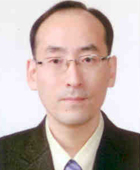
1993 : BS degree in Department of Electronic Engineering, Dongguk University
1995 : MS degree in Department of Electronic Engineering, Dongguk University
1999 : MS degrees in Department of Electrical Engineering, Wichita State University, USA.
2001 : PhD degrees in Department of Electrical Engineering, Wichita State University, USA.
2002 ~ 2011 : Professor, Dep. of Electronics & Information Engineering, Konyang University, Korea
2012 ~ present : Professor, Dep. of Biomedical Engineering, Konyang University, Korea
Research interests : unified approach, optimal control, robust control, singular perturbation system, stochastic system

1989 : BS degree in Department of Mechanical Engineering, Korea Air Force Academy
1996 : MS degrees in Department of Electrical Engineering, Wichita State University, USA.
2006 : PhD degrees in Department of Electrical&Computer Engineering, Wichita State University, USA.
2007 ~ 2014 : Information & Communications Office, Korea Air Force Headquaters, Gyeryoung, Korea
2015 ~ 2017 : Korea Air Force Logistics Command, Daegu, Korea
2018 ~ present : Information & Communications Office, Korea Air Force Headquaters, Gyeryoung, Korea
Research interests : cmmunication system, unified approach, optimal control, robust control, singular perturbation system, stochastic system


